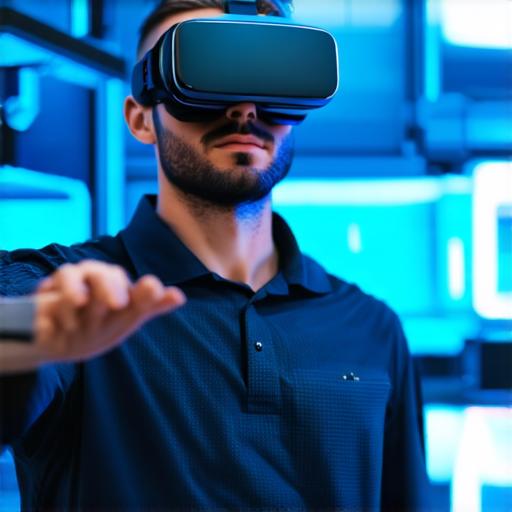
What sets augmented reality apart from virtual reality?

Augmented Reality (AR) and Virtual Reality (VR): What Sets Them Apart?
Augmented Reality (AR) and Virtual Reality (VR) are two technologies that have garnered a lot of attention in recent years. While both of these technologies are related, they differ significantly in their approach to immersing users into digital worlds.
What is augmented reality?
Augmented Reality is a technology that overlays digital information onto the real world. This information is presented in real-time, allowing users to interact with both the physical and digital environments simultaneously. AR applications can range from simple games to complex industrial processes, where virtual objects are overlaid onto the real-world environment to provide additional context or functionality.
What is virtual reality?
Virtual Reality is a technology that completely immerses users in a simulated environment. VR headsets create a 360-degree view of a virtual world, which can be used for gaming, entertainment, training, and other purposes. Unlike AR, VR users are not able to interact with the physical world while they are in the virtual world.
How do AR and VR differ?
One of the main differences between AR and VR is their level of immersion. VR provides a complete immersion into a simulated environment, while AR overlays digital information onto the real-world environment. This means that users can still interact with the physical world while they are in an AR experience, which can make for more practical applications.
Another difference is the level of interaction between the user and the technology. In VR, the user interacts directly with the virtual world through hand gestures or other input devices. In AR, the user interacts with both the physical and digital worlds simultaneously, often through a smartphone or tablet. This means that AR experiences can be more intuitive and accessible to users who may not have experience with VR.
Real-life examples of AR and VR in action
AR and VR are being used in a variety of industries, from gaming and entertainment to healthcare and education. Here are some real-life examples of how these technologies are being used:
Gaming and entertainment
Both AR and VR are being used in the gaming and entertainment industries. AR games like Pokemon Go have become incredibly popular, allowing users to interact with digital objects in the physical world. VR games like Beat Saber provide a completely immersive experience that transports players into a virtual world.
Training and education
AR and VR are also being used in training and education applications. For example, medical students can use AR to visualize complex anatomical structures, while pilots can use VR simulations to practice flying. These technologies can provide a safe and controlled environment for users to learn new skills.
Manufacturing and design
AR and VR are being used in the manufacturing and design industries to streamline processes and improve efficiency. For example, AR can be used to overlay digital information onto physical parts, allowing workers to see additional context and make more informed decisions. VR can be used to simulate complex production processes, allowing designers to test different designs before committing to them.
What the future holds for AR and VR
The future of AR and VR is likely to continue to evolve as these technologies become more widely adopted. As the cost of hardware decreases and the software becomes more sophisticated, we can expect to see even more innovative uses for these technologies.


